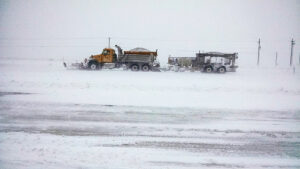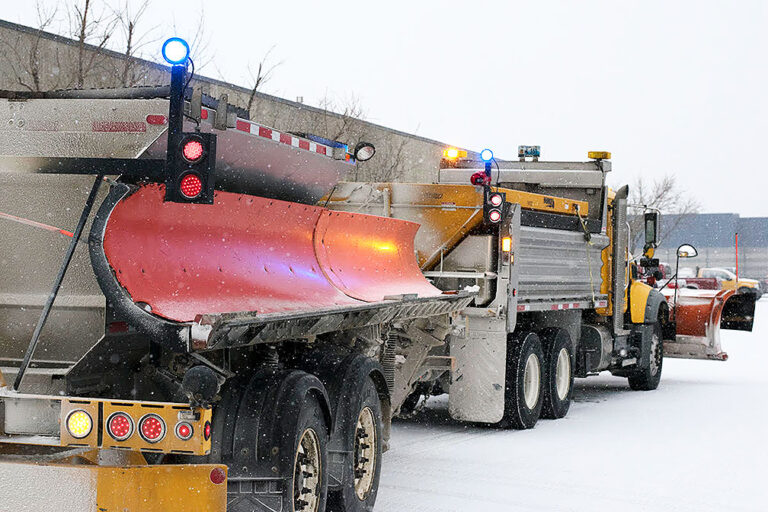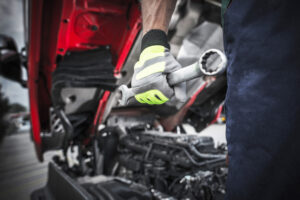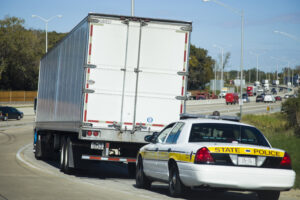CHEYENNE, Wyo. — Snow plow drivers are on the roads when the conditions are at their worst, and they’re also out between storms treating trouble spots.
Unfortunately, operators have been seeing an increase in plow strikes over the last few winters.

Below are 10 things that Wyoming Department of Transportation (WYDOT) snowplow drivers believe motorists — both tourists and residents — should know as they encounter plows on their travels:
- Give plows room to work. WYDOT’s plow trucks have amber, red and blue flashing lights mounted on top of the cab, on the back of the sanders and a light on the wing plow. Snowplows are huge machines capable of moving tons of snow every minute. Like all vehicles, plows have blind spots; for safety, avoid following too closely.
- Avoid passing a plow truck when it’s plowing snow. The safest driving surface is at least four car lengths behind the plow. If you must pass, don’t pass into the plume of snow being moved.
- Snowplows typically plow and sand roads at speeds below the posted speed limit. Plows often operate at speeds of 45 mph or less, depending on road conditions, including snow levels, drifting and ice. Plows work in small sections at a time and regularly pull out of traffic to turn around or replenish salt/sand. Please drive patiently.
- Watch for tow plows. Some parts of the state use tow plows, which are large pieces of equipment that help plow operators plow both driving and passing lanes simultaneously; avoid passing until it is safe to do so. Plows also operate large wing plows on the shoulders of the highways, never use the emergency lane/highway shoulder to pass.
- The plow truck often creates a snow cloud when working. Keep a close watch, as plows often stir up their own whiteout conditions while working, and the flashing lights may not be visible. Wait for visibility to improve before passing, especially on two-lane highways.
- Different storms and temperatures require different methods to fight snow and ice. WYDOT trucks spread sand, anti-icing and de-icing chemicals each storm as needed and as temperatures allow. Salt is ineffective in sub-zero temperatures and strong winds. Avoid following too closely when salt and sand are being applied.
- Even after roads are plowed and treated, slippery conditions can persist. Be especially careful in areas such as intersections, on-/off-ramps, bridges and shady areas. These areas may be wet during the day and icy at night. Blowing and drifting snow can also create slick driving conditions for drivers, including slush, ice and drifted snow.
- Be patient with road conditions and road-plowing efforts. Remember that road conditions change depending on temperature, wind speeds and other factors. Even on treated roads, avoid using cruise control and drive according to conditions.
- Limit distractions and focus on driving. Avoid cell phone use and other distractions that prevent you from paying attention to what’s happening on the roadway. Wyoming’s weather can change in a matter of miles.
- Know before you go. It’s wise to do some homework before heading for work, driving to an out-of-town appointment, or departing for a bigger town on a shopping outing. You can monitor WYDOT road conditions at www.wyoroad.info or call 1-888-WYO-ROAD or 511 Notify by dialing 511. This system can also be enabled to deliver road alerts as text messages or e-mails on routes that the user identifies. Go to www.wyoroad.info and choose the 511 Notify icon to set up your account. Sometimes road conditions are challenging, and other drivers are unpredictable, so staying home or rescheduling an appointment might be great alternatives to driving during a snow event.
The Trucker News Staff produces engaging content for not only TheTrucker.com, but also The Trucker Newspaper, which has been serving the trucking industry for more than 30 years. With a focus on drivers, the Trucker News Staff aims to provide relevant, objective content pertaining to the trucking segment of the transportation industry. The Trucker News Staff is based in Little Rock, Arkansas.








